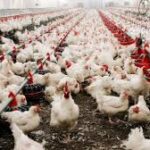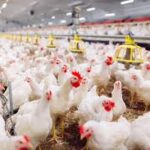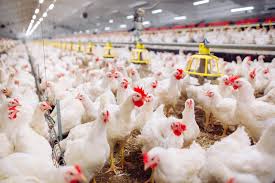THE PROCESS OF RAISING FACTORY FARM CHICKEN
Factory farming refers to the system of production that provides nearly all the meat, fish, eggs, and dairy sold in the markets of higher-income countries like the U.S. The lives of the chickens that are raised in the factory farm begin at the hatching machines. The process of raising factory farm chicken involves several steps, including hatching, brooding, grow-out, and processing. The hatching process begins with fertilized eggs being placed in incubators, where they are kept at a specific temperature and humidity until they hatch. Once they have hatched, the chicks are moved to brooding facilities, where they are kept warm and given feed and water.
Once they have reached the right size, they are moved to grow-out facilities, where they are fed a specific diet to promote rapid growth. Then, they are processed at a slaughterhouse. The slaughtering process for factory farm chicken is highly mechanized. The chickens are moved through a series of automated systems that perform tasks like defeathering, eviscerating, and chilling. The chicken carcasses are then inspected for quality and packaged for sale. The process of raising factory farm chicken is often criticized for its potential to promote the spread of disease, its reliance on antibiotics, and its environmental impact.

Baby chickens in factory farms start life by undergoing a painful, unanesthetized amputation of about one-third of their beaks. This debeaking, also referred to as beak trimming, leaves chickens depressed, in chronic pain, and in a state of extreme sensitivity when using their beaks, often for the rest of their lives. Factory farming denies chickens the freedom to behave naturally: to build nests, spread their wings, take dust baths to clean themselves, scratch for food, bond with their children and other flock members, or live full lives.
READ MORE ON : LIVESTOCK PROCESSING AND MARKETING











Ahaa, its fastidious dialogue on the topic of this article at this
place at this web site, I have read all that, so at
this time me also commenting at this place.